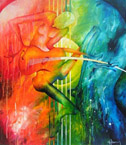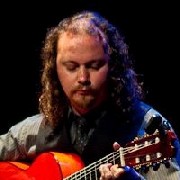Welcome to one of the most active flamenco sites on the Internet. Guests can read most posts but if you want to participate click here to register.
This site is dedicated to the memory of Paco de Lucía, Ron Mitchell, Guy Williams, Linda Elvira, Philip John Lee, Craig Eros, Ben Woods, David Serva and Tom Blackshear who went ahead of us.
We receive 12,200 visitors a month from 200 countries and 1.7 million page impressions a year. To advertise on this site please contact us.
|

|
|
Castellana examples please
|
You are logged in as Guest
|
|
Users viewing this topic: none
|
|
Login  | |
|

   
xirdneH_imiJ
Posts: 1893
Joined: Dec. 2 2006
From: Budapest, now in Southampton

|
 RE: Castellana examples please (in reply to estebanana) RE: Castellana examples please (in reply to estebanana)
|
|
|
i've played all kinds of alegrías, dancers like to vary, silencio-castellena-escobilla, or silencio-escobilla-castellana, sometimes skipping either, it really depends...but i like to play it, i like these breaks in dynamics when the audience has no clue whats going on :)
btw, E, E7, A, B7, back to E
|
|
|
|
REPORT THIS POST AS INAPPROPRIATE |
Date Feb. 16 2013 22:00:04
 |
|
 New Messages New Messages |
 No New Messages No New Messages |
 Hot Topic w/ New Messages Hot Topic w/ New Messages |
 Hot Topic w/o New Messages Hot Topic w/o New Messages |
 Locked w/ New Messages Locked w/ New Messages |
 Locked w/o New Messages Locked w/o New Messages |
|
 Post New Thread
Post New Thread
 Reply to Message
Reply to Message
 Post New Poll
Post New Poll
 Submit Vote
Submit Vote
 Delete My Own Post
Delete My Own Post
 Delete My Own Thread
Delete My Own Thread
 Rate Posts
Rate Posts
|
|
|
Forum Software powered by ASP Playground Advanced Edition 2.0.5
Copyright © 2000 - 2003 ASPPlayground.NET |
0.046875 secs.
|


 Printable Version
Printable Version










 New Messages
New Messages No New Messages
No New Messages Hot Topic w/ New Messages
Hot Topic w/ New Messages Hot Topic w/o New Messages
Hot Topic w/o New Messages Locked w/ New Messages
Locked w/ New Messages Locked w/o New Messages
Locked w/o New Messages Post New Thread
Post New Thread